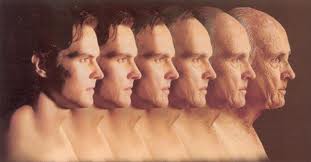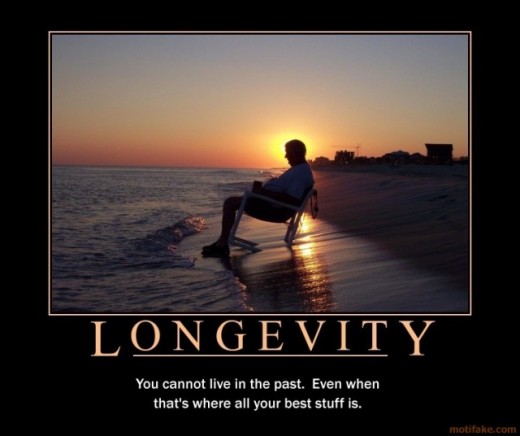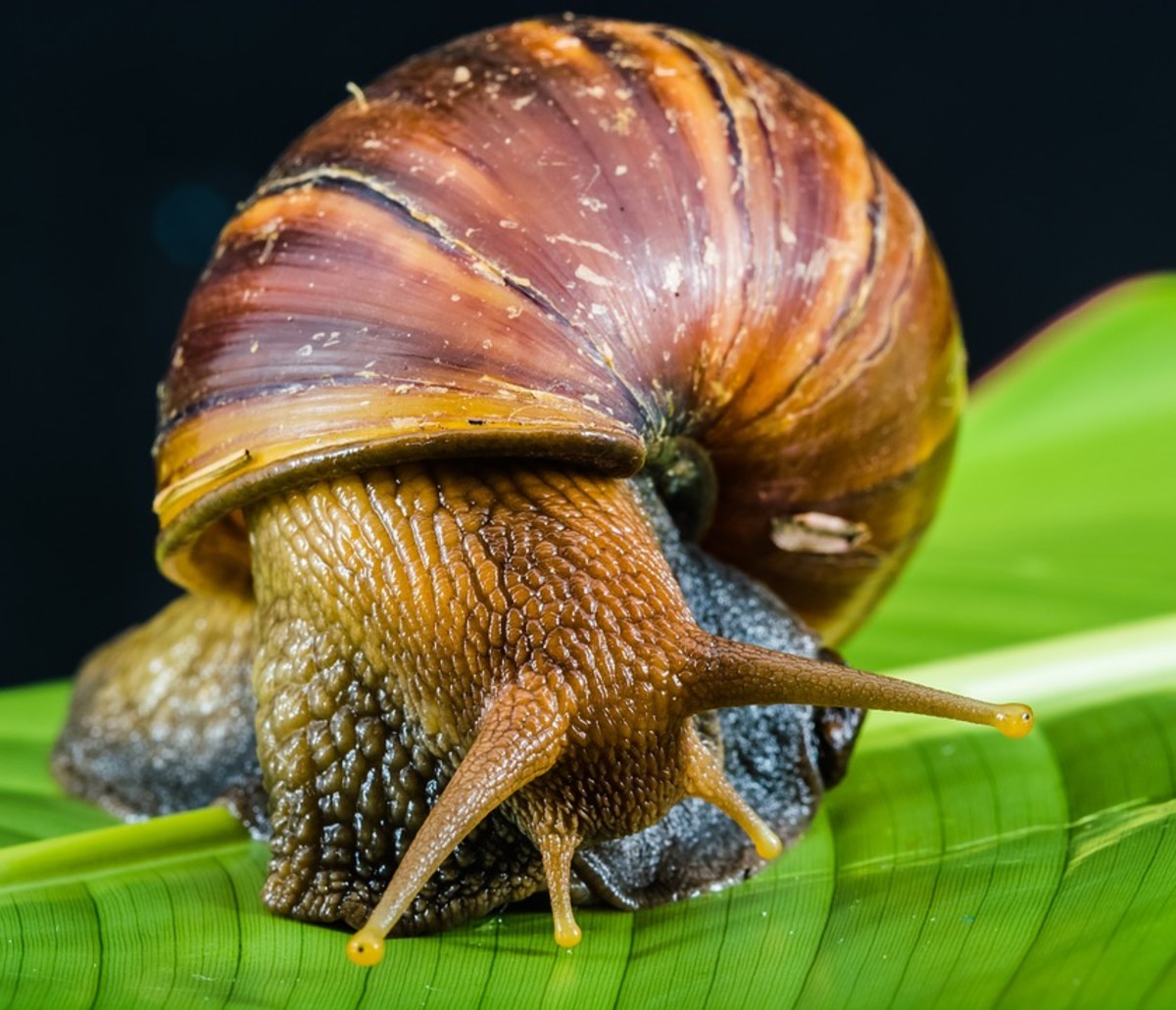Two Biological Processes Determine How Long All Animals and Plants Can Live
Introduction
Almost everyone, from time to time ask themselves this question, Why can’t we live for ever? First we need to know what is it that keeps us from achieving immortality. A lot of people will blame our mortality on the environment we live in, the food we eat or the water we drink everyday. Actually, the reason we do not live forever is because our body does not allow us to.
The life expectancy of every living organism on earth is determined by how much energy is allotted to two main processes, the process of repairing wear and tear on their body, and the process of reproduction. If all or most of our energy in the body were devoted to repairing wear and tear in our body we would live a lot longer. Unfortunately, that is not the case because we must also glow and reproduce to perpetuate our kind.

Life Is Getting Longer
Today our life expectancy is much higher than our ancestors. A caveman was lucky to reach the age of 30 if he did not suffered from some serious injury or was killed by a wild animal. The average life expectancy in the United States 100 years ago was 53 years for the entire population. During that time 25 percent of children did not make it to their fifth birthday due to infections and many women died from complications of childbirth. Today that number is 78.1 years for all population due to better health care and improved sanitation. In Japan the average life expectancy for a women is 85.6 years while in some African countries the life expectancy is around 30 years or less due to the pandemic spread of HIV and other infectious diseases. Yes, life is getting longer. There is a case where one person, a French women named Jeanne Calment, lived for a staggering 122 years. Scientists believe that is the limit for us.
The Reason Why We Can’t Live That Long
All organisms are made up of basically two types of cells, the non-reproductive cells and the reproductive cells. The non-reproductive cells are cells in the eyes; skin, muscles, bones and the heart just to name a few. The reproductive cells are the sperms and eggs. All organisms are constantly facing challenges to survive.
Radiation, chemicals, free radicals and harmful bacteria and viruses are constantly bombarding and attacking the cells in our body. During a typical day there are thousands of cells in our body that need repair due to all this wear and tear. The DNA (or genetic material) is also damaged from these environmental threats and ultimately they are mutated or changed. Our body eventually replaces these cells through continual copying and translation of the genetic information in the DNA. Life depends on this process. This process requires a lot of energy, but all organisms only have a limited supply of energy to split between repairing and maintaining healthy cells and reproduction. Consequently, through the course of evolution all organisms now steer most of this limited energy supply to maintaining the reproductive cells.

The Theory of Aging: The Disposable “Soma” or Body
Aging occurs because our body must make a trade-off between reproducing and staying in good repair. Our body cannot have it both ways with the limited amount of energy it has. A professor of medicine at Newcastle University in England came up with “The Disposable Soma Theory”. The theory states that if we are given a limited amount of energy; most of that energy is allotted to making and protecting the sperms and eggs (reproductive cells) while what is left will go to repairing the non-reproductive cells (somatic cells) such as the eyes, bones, muscles and skin. In other words, the body is disposable.
As a result, cells accumulate damage over time, which causes the organs to become diseased. Eventually, the organs will not function as expected and death will occur. In addition, cells that are severely damage or cannot divide anymore ultimately commit suicide (apoptosis). Another way of looking at this theory; why spend a lot of time investing so much energy repairing damaged cells in an environment where survival is not indefinite and we have a limited time to reproduce. Aging results from the accumulative damage in our cells over our lifetime. Our body is disposable while our genes from our reproductive cells live on in the next generation.
Life Expectancy of Various Organisms
Organism
| Maximum recorded life span (years, in wild)
|
|---|---|
Mayfly
| 1 day
|
Dragonfly
| 4 months
|
House Mouse
| 4
|
Jack Rabbit
| 13
|
Mountain Lion
| 15
|
Great horned owl
| 20
|
Dog
| 29
|
Bat
| 30
|
Cat
| 36
|
Queen Termite
| 50
|
Chimp
| 59
|
Horse
| 62
|
Condor
| 75
|
Barrel Cactus
| 65
|
Eastern box turtle
| 80
|
Elephant
| 86
|
Yelloweye rockfish
| 120
|
Human
| 122
|
Galapogos Turtle
| 150
|
Lobster
| 170
|
Koi fish
| 200
|
Red sea urchin
| 200
|
Bowhead Whale
| 211
|
Bristlecone pine
| 1000
|
Jellyfish
| immortal
|
Hydra
| immortal
|
Source: Scientific American Magazine
Factors That Control Longevity
However, there are factors that control longevity. Genetics and metabolic rate (how fast we consume energy) plays a critical role in how long we live and age. There are a few people in the world who live to be 100 or more because they carry specific genes that control their aging.The life span of all organisms is control by genetics more or less and metabolic rate also plays a part here. For example, the metabolic rate of a mouse is much faster than that of a tortoise; which is the reason why the mouse only lives for 3 years and the tortoise lives for 150 years.
From another perspective, the mouse must reproduce as soon as possible and the tortoise has basically a century to reproduce. The higher the animal is in the table to the right, the higher the percentage of their life is spent on reproducing versus repairing cell damage. For instance, the Mayfly lives for one day just to have sex and then die. They literally spend their entire short life to find a mate and reproduce.
The longevity of some organisms can be changed by adjusting their metabolic rate. They can be adjusted either by environmental stresses or eating less food. The metabolic rate of mice will decrease if they are subjected to an environment where food is scares. They will spend more energy repairing their body and less time reproducing.
For humans it is not that simple, eating less food does not decrease our metabolic rate significantly to increase longevity, since our metabolic rate is already low. Also we would have to reduce our caloric intake by 30% - 50% to see any significant change and if we reduce our caloric intake by more than 50% we will significantly reduce our longevity. Despite all this, aging still occurs just at a slower pace.
However, there are a few organisms that live forever; the jellyfish and the hydra. Both organisms have reproductive cells throughout their body. All of their energy goes to repairing and maintaining their cells. For example, a hydra can be cut into a hundred pieces and each one of those pieces will grow into a new hydra. Both the jellyfish and the hydra spend most of their life repairing their cells than reproducing.

Can We Slow Aging?
Unfortunately, the answer is no because aging is a complicated process. But basic research on the aging process may eventually lead to longevity drugs. Most of the researches will concentrate on drugs to control metabolic rate and on drugs to control the behavior of damaged cells.

© 2010 Melvin Porter








